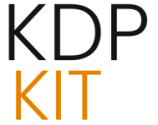How to Self-Publish a Book: Complete Guide + Costs (2025)

Self-publishing has transformed the literary landscape, offering authors unprecedented creative control and direct access to a global readership. In 2025, the industry continues to evolve rapidly, driven by technological advancements, changing reader behaviors, and new distribution models. This comprehensive guide outlines the essential steps, current costs, and emerging trends for authors looking to navigate the self-publishing journey successfully.
Designing Your Book’s Visual Identity
The visual presentation of a book is paramount, serving as its initial handshake with potential readers. In a crowded marketplace, a professional and appealing design is not merely aesthetic; it is a critical marketing tool that signals quality, genre, and genre expectations. Investing in high-quality cover and interior design can significantly influence a reader’s purchasing decision.
Creating an Irresistible Book Cover
The book cover is arguably the most potent marketing asset for any self-published author. It must be eye-catching, instantly communicate the book’s genre and tone, and convey the essence of its content. Professional cover designers possess the expertise to craft compelling visuals that stand out online and in print. They expertly leverage typography, color psychology, imagery, and composition to attract the target audience. While DIY design might seem cost-saving, it often results in a professional deficit that can deter readers. For authors serious about their book’s success, a professional cover design is a non-negotiable investment.
Typography and Interior Layout
Beyond the cover, the interior design profoundly impacts the reading experience. Appropriate font choices for headings and body text, well-balanced margins, and consistent spacing are crucial for readability and aesthetic appeal. A poorly formatted interior can detract from even the most compelling narrative. Professional interior designers ensure that the layout is attractive and functional for both ebook and print formats, enhancing reader immersion. This includes careful consideration of chapter breaks, page numbering, and the overall visual flow of the text, contributing to a smooth and enjoyable reading journey.
Understanding Ebook and Print Formatting
Ebooks and print books require distinct formatting approaches. Ebooks need flexible formatting that adapts seamlessly to various e-reader devices and screen sizes, ensuring text reflows correctly. This necessitates specific file formats like EPUB or MOBI, along with meticulous management of elements such as chapter breaks, images, and tables of contents. Print books, conversely, demand precise page layout, including margins, bleed areas for edge-to-edge graphics, and consistent formatting for print-on-demand (POD) services. Professional formatters ensure that a book looks polished and error-free in all desired formats, preventing common issues like inconsistent spacing or broken images.
Navigating Publishing Platforms: Reaching Your Readers
The digital age has democratized publishing, providing authors with numerous avenues to distribute their work globally. Understanding the strengths, weaknesses, and specific features of various platforms is key to maximizing reach and profitability.
An Overview of Self-Publishing Avenues
Self-publishing encompasses a spectrum of options. Authors can choose fully independent routes, utilize hybrid publishers offering services for a fee, or work with aggregators that distribute to multiple retailers. Familiarizing oneself with the major players, their business models, and typical royalty structures is essential for making informed decisions that align with an author’s goals for their book’s distribution and financial return.
Deep Dive into Amazon Kindle Direct Publishing (KDP)
Amazon Kindle Direct Publishing (KDP) remains the dominant force in the self-publishing market. It provides a streamlined platform for authors to publish ebooks, paperbacks, and hardcovers directly onto Amazon’s vast marketplace. KDP empowers authors to set prices, retain rights, and earn royalties, offering unparalleled access to millions of potential readers worldwide. As of 2025, KDP has introduced significant updates. For instance, KDP Select now allows enrolled ebooks to be distributed to public libraries via platforms like Overdrive and Hoopla, in addition to Kindle Unlimited, expanding reach without compromising Amazon exclusivity for sales. Accessibility requirements for ebook uploads have also become more prominent, aligning with emerging regulations and best practices for inclusive design. Furthermore, a notable royalty adjustment for print books, effective June 10, 2025, will see royalties drop from 60% to 50% for paperbacks and hardcovers priced below a certain regional threshold, though this is partially offset by reductions in printing costs for certain formats. KDP has also updated its keyword rules to prevent redundancy and the use of unauthorized brands, reinforcing the need for careful metadata management. Authors can leverage promotional tools like Kindle Countdown Deals and Free Book Promotions, and utilize A+ Content to create enhanced storefronts for their books.
Exploring Other Publishing Options and Distributors
While Amazon KDP is a primary platform, many authors choose to distribute “wide” to reach broader audiences. Platforms like Kobo Writing Life, Apple Books, and Google Play Books offer additional ebook sales channels. For print distribution beyond Amazon, IngramSpark is a leading option, providing access to a wider network of bookstores and libraries. Aggregators such as Draft2Digital and Smashwords simplify the process of distributing ebooks across multiple retailers simultaneously, often handling conversion and metadata management. Direct sales via an author’s own website (e.g., using Shopify or BookFunnel) are also gaining momentum, allowing authors to retain higher profit margins and cultivate direct relationships with readers.
Calculating the Investment: Understanding Self-Publishing Costs
Self-publishing requires authors to function as entrepreneurs, bearing all costs upfront in exchange for creative freedom and higher per-sale royalties. A clear understanding of these financial commitments is vital for budgeting and profitability.
Estimating Editing and Proofreading Expenses
Professional editing is fundamental to a high-quality book. Costs vary based on editor experience, genre, and manuscript length. Developmental editing, which focuses on the broader narrative structure, typically commands higher rates than copyediting (grammar, clarity, consistency) or proofreading (final error check). Comprehensive editing services for a standard novel can range from $1,000 to $2,000. More detailed breakdowns suggest developmental editing could cost around $2,400, copyediting $1,600, and proofreading $1,600. For an 80,000-word book, professional editing costs can range from $2,000 to $4,720. Proofreading, as the final polish, is generally the least expensive but remains a critical step.
Budgeting for Cover Design and Formatting
A professional book cover design is a significant investment, typically costing between $250 and $1,000, with some designers charging up to several thousand dollars for highly sought-after artists. Averages from professional platforms place the cost around $880. For interior formatting, costs generally range from $50 to $500 for both ebook and print versions, depending on complexity [provided text]. Some sources indicate formatting costs can be as low as $0-$200 if done in-house or with basic services.
Marketing and Advertising Budget Considerations
Marketing is an ongoing expense crucial for reaching readers. Budgets can range dramatically, from minimal organic efforts to extensive paid campaigns costing thousands of dollars. Initial ad spend for platforms like Amazon Ads or Facebook Ads might start at $5-$100 per day. Other costs can include hiring a publicist, creating promotional materials, and maintaining an author website. Many authors begin with a modest budget and reinvest profits as sales grow. For example, BookBub services can range from $105 to $4,064, while email marketing services might cost $12-$75 monthly.
Platform Fees and Royalties Explained
Platforms like Amazon KDP and IngramSpark have specific royalty structures. KDP offers royalty options of 35% or 70% for ebooks, with specific conditions on pricing and territory for the 70% rate. Print book royalties are calculated as list price minus printing costs and Amazon’s commission. As noted, KDP print royalties are changing in June 2025 for lower-priced books. IngramSpark offers broader distribution but may have different fee structures for uploads and different royalty considerations. Authors must understand these to accurately forecast earnings.
Launching Your Book: Strategies for a Successful Debut
The book launch period is critical for generating initial momentum, attracting reviews, and signaling to algorithms that the book is active and engaging. A well-executed launch can set the stage for sustained success.
Pre-Launch Buzz Building
Weeks or months before release, authors should begin building anticipation. This can include teasing cover art, sharing excerpts, announcing the release date, and engaging with potential readers on social media. Building an email list of interested readers, perhaps by offering a free sample or related short story, is a highly effective strategy. Networking with book bloggers, reviewers, and genre influencers can also generate early interest and pre-release buzz.
Launch Day Activities and Promotions
Launch day is focused on driving maximum sales and downloads. Coordinated promotions, such as temporarily discounting an ebook, running targeted ad campaigns, or sending special announcements to an email list and social media followers, are common. Encouraging early readers to leave reviews is paramount, as reviews significantly impact visibility on retail platforms. A “launch team” of dedicated readers who agree to purchase and review the book on launch day can provide a crucial initial boost.
Leveraging Early Reviews
Early reviews are invaluable for self-published books, providing essential social proof that influences purchasing decisions. Positive reviews also signal to platform algorithms, such as Amazon’s, that the book is well-received, potentially increasing its visibility in search results and recommendations. Authors should actively encourage honest reviews, while adhering to platform guidelines against incentivizing or purchasing them. Thoughtfully responding to reviews, both positive and negative, demonstrates author engagement and can foster a sense of community.
Sustaining Momentum: Marketing and Promotion Beyond Launch
The launch is merely the beginning. Long-term success requires ongoing marketing and promotional strategies to maintain visibility, attract new readers, and encourage repeat purchases.
Developing a Long-Term Marketing Plan
A sustainable book career relies on continuous promotional activities, advertising, and audience engagement. A flexible long-term plan should be adaptable to market shifts and reader behaviors. Regularly assessing the effectiveness of various marketing tactics helps authors allocate resources efficiently and refine their strategies for optimal impact.
Social Media Engagement for Authors
Social media platforms are powerful tools for authors to connect directly with readers, build community, and promote their work. Consistent engagement on platforms like TikTok, Instagram, X (formerly Twitter), and Facebook helps authors stay top-of-mind. Sharing content beyond direct sales pitches—such as insights into the writing process, genre discussions, and relevant articles—fosters loyalty and word-of-mouth marketing. TikTok and Reels are particularly effective for book promotion in 2025.
Email List Building and Author Newsletters
An author’s email list is one of their most valuable assets, offering direct communication independent of algorithm changes. Regularly sending newsletters—whether weekly, monthly, or quarterly—keeps subscribers informed about new releases, special promotions, and behind-the-scenes content. This direct channel nurtures readership and drives sales. Offering exclusive content or early access for subscribers can further incentivize sign-ups and engagement.
Exploring Paid Advertising Channels
Paid advertising is a common and effective method for reaching new audiences. Amazon Ads (Sponsored Products, Sponsored Brands) are crucial for visibility on the platform, placing books in relevant search results and on product pages. Other platforms like Facebook Ads, BookBub Ads, or Google Ads can also be highly effective depending on the genre and target audience. Learning to target ads precisely and monitor their performance is key to achieving a positive return on investment.
Author Branding and Online Presence
A consistent author brand helps readers recognize and connect with an author across all their platforms and books. This includes the author name, website, social media voice, and overall public persona. A professional author website serves as a central hub, providing essential information about books, the author’s bio, contact details, and links to sales pages and social media. A strong, unified online presence builds credibility and facilitates reader discovery and engagement.
Legal and Business Aspects of Self-Publishing
Beyond the creative and marketing endeavors, self-publishing requires attention to legal and business fundamentals. Treating writing as a business from the outset ensures compliance and protects intellectual property.
Understanding Copyright and ISBNs
Copyright protection begins automatically the moment a work is created in a tangible form. However, officially registering copyright with a national office provides stronger legal recourse. An International Standard Book Number (ISBN) is a unique identifier for a book. While platforms like Amazon KDP offer free ISBNs specific to their services, purchasing independent ISBNs from a national agency is recommended for broader distribution and publisher of record control. The cost for an ISBN varies; a single ISBN can be around $125, while bundles of 10 are approximately $295.
Setting Up Your Author Business
For tax purposes and legal protection, it is advisable to treat self-publishing activities as a business. This may involve registering a business name, opening a separate business bank account, and maintaining meticulous records of all income and expenses. Depending on location and revenue, authors may need to register for sales tax or obtain a business license. Professional financial management is vital for long-term sustainability.
Navigating Contracts and Rights Management
While self-publishing grants maximum control over rights, contracts may arise with editors, designers, narrators for audiobooks, or foreign rights agents. Understanding contract terms—including exclusivity, payment schedules, and termination clauses—is crucial. Retaining as many rights as possible generally offers greater flexibility for future ventures such as film adaptations or new publishing formats.
The Evolving Landscape: Trends and Future Considerations in 2025
The self-publishing industry is dynamic, constantly shaped by technological advancements, evolving reader preferences, and market shifts. Staying informed about current trends is essential for authors to adapt and thrive.
The Impact of Artificial Intelligence on Publishing
Artificial intelligence (AI) is rapidly transforming creative industries, including publishing. AI tools can assist authors with tasks ranging from generating story ideas and drafting outlines to creating marketing copy and translating works. While AI enhances productivity and accessibility, it also raises questions about authorship, originality, and ethical use. Authors are increasingly integrating AI as a collaborative tool, rather than a replacement for human creativity, using it for brainstorming, iterative drafting, and marketing material generation. AI also aids in content repurposing, creating audiobooks faster and more affordably, and personalizing reader experiences through hyper-targeted marketing. However, the influx of low-quality AI-generated content into digital marketplaces poses a challenge, making discoverability of well-crafted books more difficult.
The Continued Dominance and Evolution of Amazon KDP
Amazon Kindle Direct Publishing (KDP) remains the cornerstone of the self-publishing ecosystem due to its extensive reach and user-friendly interface. In 2025, KDP continues to evolve with refinements to its algorithms, advertising services, and platform features. As mentioned, recent developments include allowing KDP Select books to be distributed to public libraries, implementing accessibility guidelines for ebook uploads, and adjusting royalty structures for print books. Staying abreast of these changes is critical for optimizing presence and sales on the platform.
Reader Preferences: Ebook, Audiobook, and Print
Reader consumption habits are diversifying. Ebooks remain popular for convenience, but audiobooks have seen explosive growth, becoming a significant market segment. The global audiobook market is projected to reach USD 20.28 billion by 2030, with a CAGR of 15.57%. In the US alone, audiobook revenue reached $2.22 billion in 2024, with 51% of Americans having listened to one. AI is making audiobook production more accessible and affordable, further fueling this growth. Print books continue to maintain a strong presence, with many readers preferring the tangible experience. For self-published authors, producing books in all three formats—ebook, print, and audiobook—is often the most effective strategy to capture the widest possible audience in 2025.




